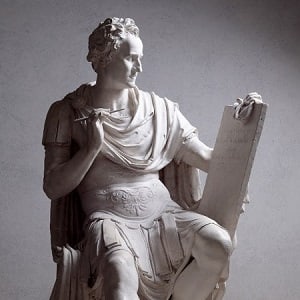Directly from New York, after the success at the Frick Collection, the exhibition on Canova and George Washington arrives in Possagno.
The initiative organized jointly to celebrate the 200th anniversary of Antonio Canova’s production of the model for the monument to the first American president, will be hosted in the spaces of Gypsotheca and Antonio Canova Museum, thus honoring the great Italian sculptor, first ambassador for the Italian art in America.
The sculpture of Canova’s President Washington
It was 1816 when the Parliament of Raleigh, North Carolina, who wanted to place a full-length statue of George Washington in the Senate room, commissioned Thomas Jefferson to receive the best sculptor in this commission.
Jefferson was convinced that no American sculptor was up to the task, and for this he proposed the name of Antonio Canova, one of the most celebrated European artists. Canova accepted the commission because “Washington was a gentleman” and was the first president of the Americans in the guise of a Roman leader, while he was writing the resignation of the third term as president of the United States.
It had been an exceptional event, perhaps unique, that of Washington’s renunciation: that a politician renouncing power in the name of an ideal of freedom was truly grandiose. The work was unveiled in 1821, in the Campidoglio of Raleigh, and the applause was such as to attract visitors from everywhere. Only a decade later a tragic fire broke out in the Parliament building, reducing the statue to a mass of fragments.
The exhibition of Possagno traces the history of the lost masterpiece, probably the least known public monument among those performed by Canova. For the first time, the full-scale plaster preparatory model, four preparatory models, the related drawings and the translation engravings are seen together. The exhibition will be completed by two busts of Jefferson and Washington made by Hudon, two painted portraits of the two American presidents, the first ideas of development for a presidential monument and all the known literature on this masterpiece.
The exhibition is curated by Mario Guderzo in collaboration with Xavier F. Salomon, Chief Curator of the Frick Collection; the exhibition catalog will include the transcription of all correspondence relating to the commission and essays by Xavier Salomon, Mario Guderzo, and by Guido Beltramini, director of the Palladio Museum in Vicenza who had edited the exhibition on Thomas Jefferson and Palladio.

